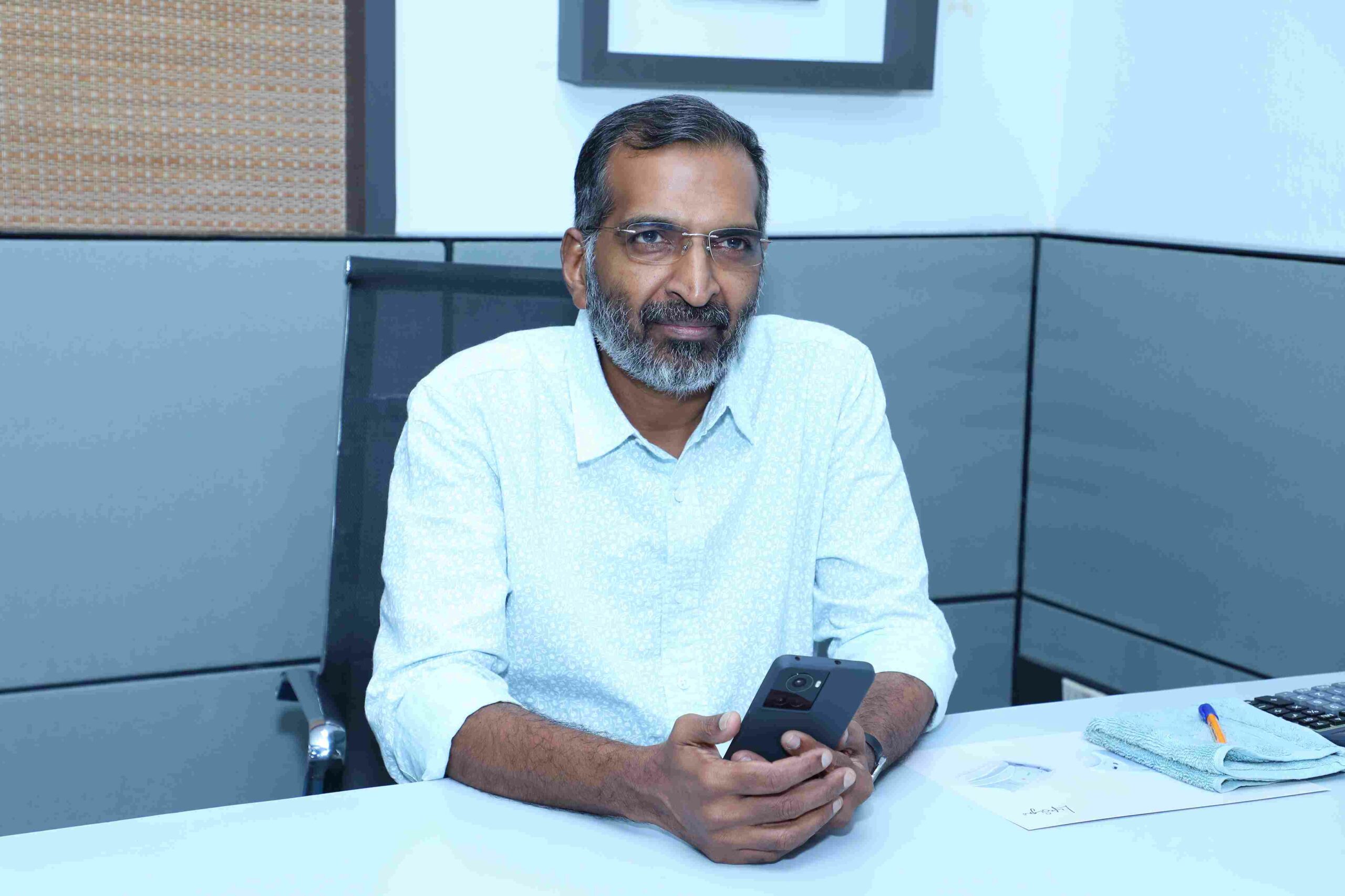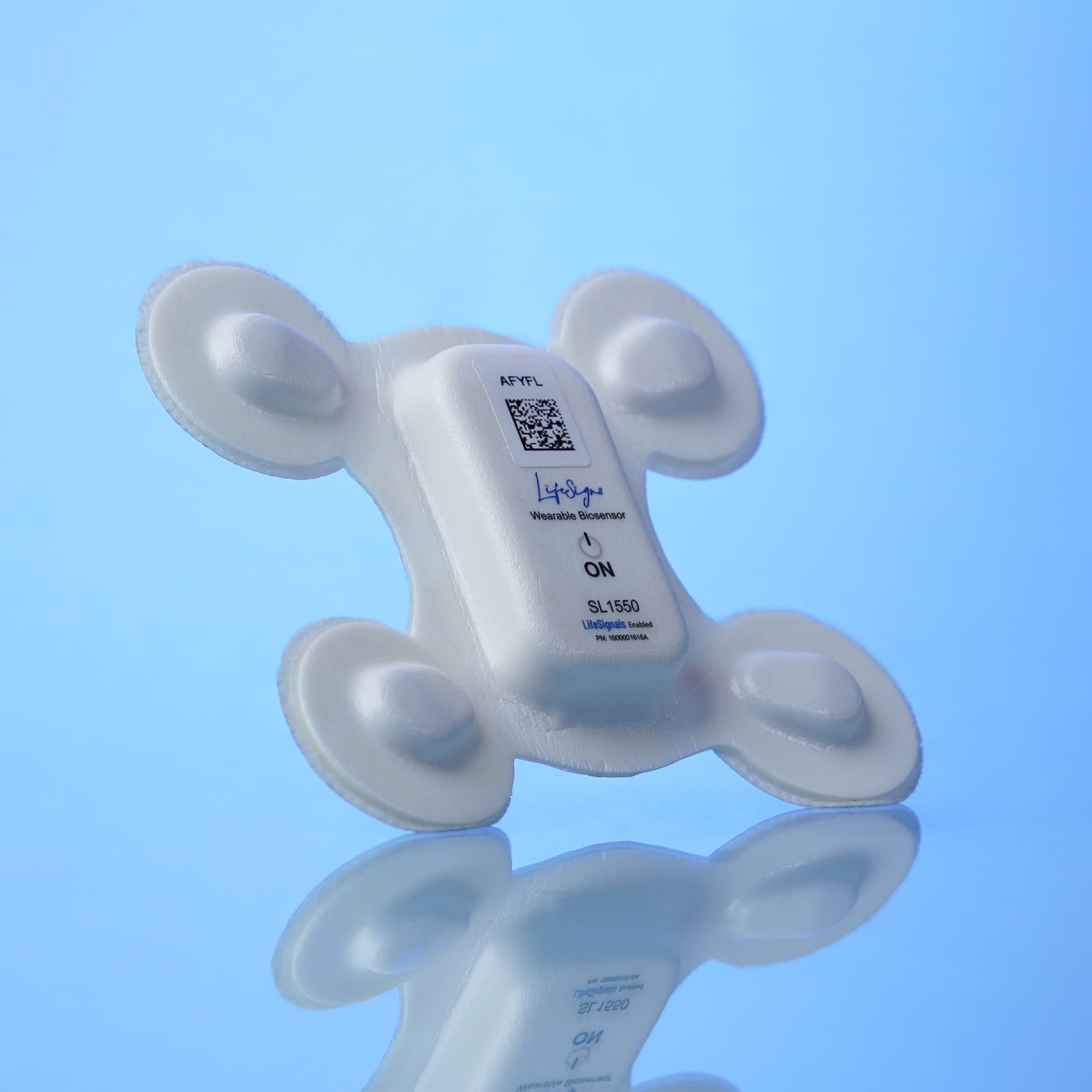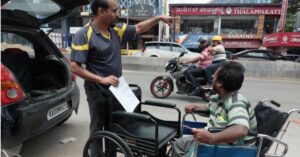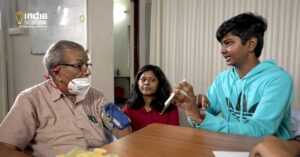Cancer Survivor’s Wireless Innovation Helps Doctors Track Patients’ Vitals in Unique Way
Chennai-based Hari Subramaniam had to make multiple rounds to the hospital while battling cancer. His observations led him to innovate the iMS biosensor, a wireless alerting system, as part of his venture LifeSigns.

Tamil Nadu resident Hari Subramaniam has come up with a wireless biosensor that is able to track patients’ vitals and relay them back to the hospital network, where the doctor would be able to get a clear and concise picture at a glance. This would eliminate the ordeal that patients often face when they are hooked up to a number of machines, which restricts mobility. Moreover, it can tackle the complex and time-consuming process of recording different vitals from various machines and keeping track of a number of reports.
The inception of the device came about after Hari’s harrowing struggle with his cancer diagnosis. He first discovered something was amiss in 2010 when he visited a temple in Sri Lanka during a work trip.
“I paid my respects and bent down. But when I tried to get back up, I couldn’t,” he recounts in conversation with The Better India. The reason for him not being able to get back, as he discovered later, was a lump under his right shoulder. In time, Hari’s world was shattered when he was told that this bulge needed to be biopsied. The entrepreneur then spent the next several months in hospitals with doctors.
‘I had stage four cancer’
Wondering what was causing him discomfort, he visited a hospital in Colombo, where he was asked to go through a series of tests. Hari, who had figured by this time that this was going to be a long-drawn process, returned to India where he would continue the rest of the tests and treatment.

And so, 2010 was a year filled with biopsies, ultrasounds, and histopathologies of the bone marrow — an ordeal following which Hari was diagnosed with lung cancer.
Treatment needed to be started immediately.
“I had a 50-50 chance of survival and things were not looking great. I had six months,” notes Hari, adding that by September 2010, radiation, chemotherapies and surgery followed. The doctors hoped that the aggressive treatment strategy would be enough.
But it wasn’t.
In 2014, Hari was told by the doctors that the cancer had metastasised and spread to his abdomen and pharynx. Frequent hospital trips and chemo sessions awaited Hari on his way to full recovery. That’s when he began noticing that while technology had extended its reach to so many areas of life, healthcare was lagging behind.
“There are so many different reports and different doctors, and to correlate all of this is a task. To add to this, there are so many devices that a patient is hooked up to during the hospital stay, each translating the patient’s vitals and giving its own data. And at the end of this entire spectrum is the doctor who needs to run through all of this data and keep note.”
“What if the system could be automated in a way that all the data could be brought to a single space?” thought Hari during one of his chemotherapy sessions. If intelligence was then added to the data, it could give alerts and intimations when the patient’s vitals weren’t looking good, and suggest what could be done.
Hari had always been of an entrepreneurial bent of mind, and it had been a while since he’d had a new idea to lose sleep over. So not wanting this idea to fade away, he began consulting with his friends in the medical community about integrating tech into the system. Through these interactions, he arrived at a variety of conclusions.
“Diseases, especially cancer, are very subjective. Sometimes medicines help, sometimes they don’t. People who do not take treatment survive sometimes, while some others succumb to the condition. During this journey, I realised that most of the time, doctors decide the way of treatment based on the data available. So if the data would be presented in a way that doctors could make decisions in a timely manner, it would lead to more informed decisions,” he explains.
The interactions that Hari had with people from the medical community also alerted him to the fact that while objectivity is prevalent while making a call if the patient’s vitals were stable or not, this is often incorrect. “Oxygen saturation for people of colour may be different than for fair-skinned persons. For some ethnic groups, body temperature is on the higher side and that is fine; it does not need medical intervention. I came across so many observations, and all of them pointed to the same thing — we don’t have a perfect solution,” he says.

An idea for a biosensor
It all began with Hari meeting with a company LifeSignals in the United States in 2018 that was developing chips for the healthcare industry. “They were working on a sensor that could collect data from the human body, and when I relayed my idea to them, they were interested.”
With a nod from the company, Hari founded LifeSigns in Chennai to focus on wearable biosensor technology for wireless in-hospital and outpatient monitoring.
The prototype was designated to be a sensor that would pick up vitals from the patient, be processed by the chip, and then translate this into actionable data. The sensor was tested in hospitals across India, especially in cities such as Maharashtra, Gujarat and Delhi NCR.
“Suggestions started pouring in from the medical community, and we began tweaking the size of the biosensor, improving its efficiency, etc. In October 2022, we came up with a model that could be deployed in hospitals.”
LifeSigns iMS, the biosensor, monitors vital signs in near real-time, enabling clinicians to maximise treatment. The product is designed for usage in a variety of settings — including hospital monitoring, post-discharge care, cardiac monitoring, and pharmaceutical solutions.
Hari says it is a palm-sized wearable device. “It is to be stuck above the heart, and it picks up vitals and transmits these to a networking system in the hospital, which in turn processes it and relays it back to the screen. These can then be viewed on a tab, mobile or computer.”
The patient need not worry about removing the device while showering, as it continues to transmit data — such as ECG, heart rate, respiratory rate, temperature, posture of the patient, blood pressure, oxygen saturation, etc.
LifeSigns lays a wireless network within the hospital to make this system possible.
Reaching across India to improve healthcare
Hari notes that they have their presence in 76 hospitals pan India, and while LifeSignals produces the biosensor patches, the integration of the sensors and technology is done by LifeSigns. He shares that during the development process of the sensor, he was focused on enabling the sensor to be accessible to people from all backgrounds.
He adds that the learning he got during his journey was that most patients end up spending a lot on critical care. “I thought that if the system is altered before things get to that stage, it would help avoid the trouble and be a huge saving. I’ve seen firsthand how in government hospitals, entire families come from the village with the patient who needs medical attention. These people have jobs they need to be at, but instead, they have to remain at the hospital and spend on the treatment.”
Don’t private hospitals already have a system in place for the automation of medical care?
“COVID has made sure that things are more efficient, automated and cost-effective. But prior to that, such a system was hard to find in private hospitals too.” To this, Hari adds that while looking for hospitals where they could integrate their technology, they resorted to private hospitals as “adaptation is faster here”.
“Government hospitals require a long route that needs to be followed,” he adds.
To date, Hari says that they have “helped around 15,000 patients with the biosensor”, and that a number of doctors, at the hospitals where the biosensor has been deployed, say it has been of help.
Dr Hima Bindu, an intensivist who monitors patients across India from the eACCESS command centre, says that the “easy-to-use and patient-friendly LifeSigns patches deployed in various Apollo hospitals across India help relaying vital signs that are critical to detecting problems early”. They have a large team of nurses and intensive care physicians who cover several locations 24/7 every day.
Meanwhile, Dr N Sridhar, consultant intensivist at Kauvery Hospital, Chennai adds, “The wearable Lifesigns biosensor allows seamless transition of patients from ICU to wards by enabling continuous monitoring without hindering patient movement, recovery, or comfort. In a small study done in our hospital where we used LifeSigns patches over three months for all patients stepping down from ICU, the number of unexpected cardiac arrests on the wards dropped to zero during the three-month study period. Although this was a relatively small before-and-after type of study, it showed a clear signal for patient benefit.”
He claims that in the future, when continuous vital signs data from the LifeSigns patches are combined with blood results from the EMR along with analytics, it will soon be able to predict patient deterioration before it happens.
Meanwhile, even as Hari feels a sense of pride in using his condition to come up with this useful idea, he says that there is one factor that will continue to be the standout point for him.
“Having been a patient myself and spending weeks in hospital beds, getting out of the bed and walking used to be a great blessing. And this device gives patients that freedom from wires and the mobility they need. I was a patient once, and I understand how amazing this is.”
If you found our stories insightful, informative, or even just enjoyable, we invite you to consider making a voluntary payment to support the work we do at The Better India. Your contribution helps us continue producing quality content that educates, inspires, and drives positive change. Choose one of the payment options below for your contribution- By paying for the stories you value, you directly contribute to sustaining our efforts focused on making a difference in the world. Together, let’s ensure that impactful stories continue to be told and shared, enriching lives and communities alike. Thank you for your support. Here are some frequently asked questions you might find helpful to know why you are contributing?

This story made me
-
97
-
121
-
89
-
167

















